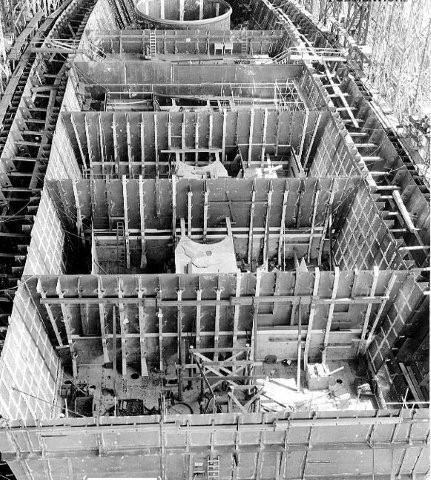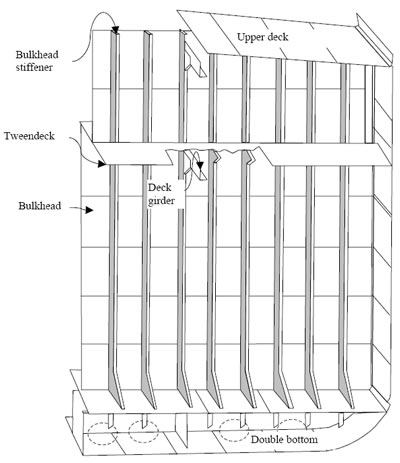The Safety of any ship highly depends on its water tight integrity and structural strength. That is why ships are so heavily stiffened and strengthened to survive rough weather, accidental grounding, or collision.
However, the structure of a ship can still get damaged, allowing water ingress and instability problem. If the water ingress is not constrained in time, the ship will capsize and sink. For this reason, water tight bulkheads are fitted on ships to avoid such situations.
What are Watertight Bulkheads?
Watertight bulkheads are vertically designed watertight divisions/walls within the ship’s structure, starting from ship’s double bottom top until the upper main deck. The bulkheads avoid ingress of water in a compartment if the adjacent compartment is flooded due to damage in ship’s hull, structure etc.
Advantages of Watertight Bulkheads
- They help in subdividing the ship into number of watertight compartments, thus increasing watertight integrity of the ship
- It helps in increasing the transverse strength of the ship which helps in reducing raking
- In case of fire bulkheads restrict the spread of the same to other compartments.
Construction and Design of Watertight bulkhead
The watertight bulkhead is made stronger and thicker than other bulkheads to sustain the water pressure in case of water ingress. They are large area bulkhead incorporated with a number of stakes of plating which are welded to the ship’s structure at side shell, tank top, and deck. The plating is arranged horizontally and stiffening is done vertically.
The thickness of water tight bulkhead increases at the bottom as with increase in depth the pressure of the water increase. The horizontal plating thickness is gradually increased towards the bottom of the bulkhead.
Strengthening is increased by vertical plate bulb stiffeners or toe angle bar welded and spaced about 760 mm apart. The ends of bulkhead stiffeners are bracketed to the deck beams and tank top.The collision bulkheads are 12% thicker than other watertight bulkhead and stiffener spacing is reduced to 600 mm to give extra strength to sustain collision.
Arrangement of Watertight Bulkheads on Ships
The minimum number of water tight bulkhead depends upon the length of the ship and the location of its machinery space. All sea going merchant ships must have at least-
- Collision bulkhead placed at forward of the ship at 1/20 L (L is length of the ship) and it should be continuous to upper deck.
- One an aft peak bulkhead which protects and encloses the stern tube and rudder trunk of the ship
- Two bulkheads enclosing the engine room from fore and aft if the location of the engine room is at mid ship.
- If the engine room is located at the aft of the ship, the aft peak bulkhead forms the part of aft bulkhead of engine room. Hence only one bulkhead is required to be placed at fore part of the engine room, separating it from the cargo space



No comments:
Post a Comment